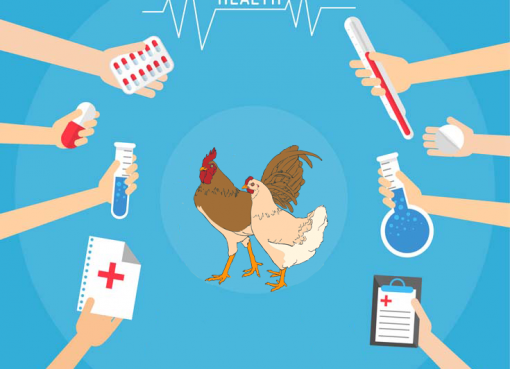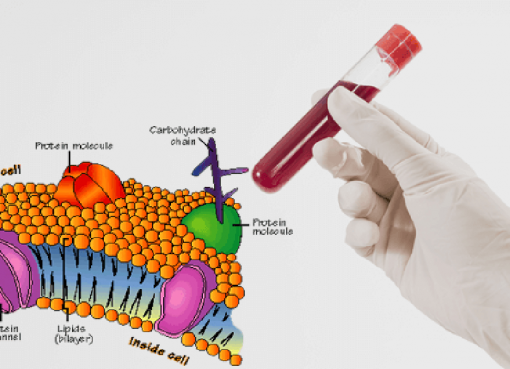Genome-wide association study (GWAS) approach has facilitated the unbiased association of the entire human genome to diseases. The completion of the human genome project has instigated the development of a genome-wide association study (GWAS) which enhanced the practice of genetic screening, diagnosis and treatment (Wu et al., 2009). Through the human genome project, the techniques for sequencing have been improved; hence the cost of sequencing portions of an individual’s genome is decreased and it gave easy access to genetic information. The project has directly improved our understanding of diseases and their treatment besides risk calculation for life threatening conditions (Wu et al., 2009). The easy access to generating genetic information has led to the commercialization of genomic medicine and counseling. The global development of commercial genomics in research, diagnosis and treatment has the potential of increasing a wealth of opportunities which may translate into billions of dollars (Agarwal et al., 2013). There is a need to direct far reaching examination to distinguish novel pathogenic qualities utilizing the “multi-OMICS” approaches pointed towards customized drug and quality treatment (Adadey et al., 2017). Apart from the above-anticipated benefits, there are other potential negative paybacks of the unconstrained access to human genome information. The extent to which the genetic information generation and use affect prospective marriages remains unknown. It is important therefore to discuss the possible implications of the generation and use of genetic information (Hallowell et al., 2003) and how it affects mate selection.
Little is known about the genetic factors influencing mate choice in humans. Still, there is evidence for non-random mate choice with respect to physical traits. Studies suggested that the Major Histocompatibility Complex may affect pair formation. Nowadays, the availability of high density genomic data sets gives the opportunity to scan the genome for signatures of non-random mate choice without prior assumptions on which genes may be involved, while taking into account socio-demographic factors.
Socio-cultural implications
Genome information is a powerful tool that can be used to explain and predict the behavioral response and genetic conditions of an individual (Rogers et al., 2008). Its power is also displayed by its potential to peek at an individual’s ancestry and discover secrets through the person’s DNA information. Knowing the problems associated with genome information, it is difficult for couples to disclose their genetic information to their partners. For instance, if one partner has the mutation associated with Huntington’s disease, then he/she knows that there is a possibility for his/her brain to deteriorate once he/she reaches 40 to 50 years of age, and may even erupt over his/her movements and die within another 10 to 20 years (Stoyanova, 2014). In another case, if a female has the mutated versions of BRCA genes, her chances of developing breast cancer in future would be higher by four to seven times than the average (Saha et al., 2015). It is not an easy task for people to accept a man as a groom who will lose his memory at age 50 and die at 60 or to accept a woman as a bride who will develop breast cancer and may die at any time alongside the cost and pain of cancer therapy. Although the predictions are not certainties, but mere probabilities, they are statistical statements pointing out predispositions that are not comfortable to live with. Phylogenetic study suggested that the first modern human-arranged marriages were practiced in Africa (Walker et al., 2011). In the African culture, marriage is between two families (Meekers et al., 1992) and knowing the genome of the life partner does not only influence the life as a small nuclear family but an extended family. In the Ghanaian culture, diseases such as epilepsy, congenital deafness/blindness, and madness are critical factors in families to look out for a bride/groom (Dugbartey and Barimah, 2013). Most families are terminating the marriage process if there is a possible gene-transmitted disease in the prospective family. Majority of these family diseases can be predicted from the DNA information of a member of the family. If there are mutations in GJB2 and GJB6 genes in an individual’s DNA information, then, there is a likelihood of his family having some members living with a permanent hearing loss (Bosch et al., 2014).
Ethical, Legal, and Social Issues
Ethical, Legal and Social Issues (ELSI) on genomic information need to be unambiguous as a nation to guide all aspects of human rights. Over the past decade, the people have shown a lot of concerns over the ELSI involved with the generation and use of genomic information (Wolf et al., 2015). Improvement in sequencing techniques has made profound impacts on genetic counseling of individuals, with medical practitioners having the potential of making several predictions from the patients’ genomic data. The technology of generating human genetic information has brought a number of issues such as ownership and fairness in the use of genetic information (Geller et al., 2014). The improper use of genetic information can lead to discrimination against people with potential traits of genetic defects. Potential problems are given arise from privacy and confidentiality of genetic information. Many people would like to protect their genetic information from getting into the public domain because there are some associated psychological issues with knowing one’s own constitution and the risk of developing future genetic conditions. Most people will drastically change their thinking on life after knowing that they stand the chance of dying or having a terminal disease (Healy et al., 1992) which can advance reduced productivity, the reproductive and mental stress of the individual. There must be laws to control the access, ownership and notwithstanding interpretation of genomic data of spouse.
Benefits of knowing genome information
Even though it will require a long time to fully obtain and understand the impression encoded in the 3 billion nucleotides of the human genome, there is already a futuristic application of the little information generated so far. Based on about 2% of the genome reference that can be interpreted, it is accessible to determine the differences between individuals and predict their risks for conditions such as cystic fibrosis, cancer, Alzheimer’s disease and other deadly illnesses (Khoury et al., 2004). It is worth mentioning that making accessible one’s genetic impression has equally important benefits in spite of the numerous ethical and social issues. Personalized medicine is one of the potential benefits an individual can get from knowing his/her genetic makeup. In personalized medicine, medical decisions, practices, interventions and/or products are custom built to an individual patient based on his/her predicted response or risk of disease. The information encoded in the genome of the individual is used to predict their response and risk of disease. This practice was found to increase life expectancy in patients living with the fatal genetic disease (Paquot, 2015). It is therefore evident that a couple who know their genetic information will seek personalized medical attention to increase their chances of not developing a genetic disorder or persevere curative or treatment advice for an existing genetic disease. Gene therapy is currently used in some clinics to treat terminal genetic diseases. In the practice of gene therapy, the gene mutations responsible for the diseases are determined from analyzing the patients’ genetic data. Based on the genetic information, appropriate techniques are used to replace the defective gene (Katz et al., 2017; Williams et al., 2017).
Conclusion
It is important to note that knowledge of spouse’s genome information will help to appreciate his/her current and possible future conditions. It clears doubts and helps the couple to prepare adequately to manage any present or future genetic condition. The understanding and the full explanation of the cause of a genetic condition will also help the couple to know how to support each other to improve the health and quality of life of the affected partner.
References
Adadey SM, Awandare GA, Amedofu GK and Wonkam A (2017). Public health burden of hearing impairment and the promise of genomics and environmental research: A case study in Ghana, Africa. Omics: J. Int. Biol. (In press).
Agarwal A, Sayres LC, Cho MK, Cook-Deegan R, Chandrasekharan S (2013). Commercial landscape of noninvasive prenatal testing in the United States. Prenatal Diagn. 33(6): 521-531.
Bosch J, Noubiap JJ, Dandara C, Makubalo N, Wright G, Entfellner JB, Tiffin N, Wonkam A (2014). Sequencing of GJB2 in Cameroonians and Black South Africans and comparison to 1000 Genomes Project Data Support Need to Revise Strategy for Discovery of Nonsyndromic Deafness Genes in Africans. Omics: J. Integrative Biol. 18(11): 705-710.
Dugbartey AT, Barimah KB (2013). Traditional beliefs and knowledge base about epilepsy among university students in Ghana. Ethnic. Dis. 23: 1-5.
Geller G, Dvoskin R, Thio CL, Duggal P, Lewis MH, Bailey TC, Sutherland A, Salmon DA, Kahn JP (2014). Genomics and infectious disease: a call to identify the ethical, legal and social implications for public health and clinical practice. Genome Med. 6(11): 106.
Hallowell N, Foster C, Eeles R, Ardern-Jones A, Murday V, Watson M (2003). Balancing autonomy and responsibility: the ethics of generating and disclosing genetic information. J. Med. Ethics 29:74- 79Healy B (1992). Hearing on the possible uses and misuses of genetic information. Human Gene Ther. 3: 51-56.
Katz ML, Johnson GC, Leach SB, Williamson BG, Coates JR, Whiting RE, Vansteenkiste DP, Whitney MS (2017). Extraneuronal pathology in a canine model of CLN2 neuronal ceroid lipofuscinosis after intracerebroventricular gene therapy that delays neurological disease progression. Gene Ther. 24(4): 215-223.
Khoury MJ, Little J, Burke W (Eds.) (2004). Human genome epidemiology: a scientific foundation for using genetic information to improve health and prevent disease. Oxford University Press. New York. pp. 3-16.
Meekers D (1992). The process of marriage in African societies: A multiple indicator approach. Population and Development Review. pp. 61-78.
Paquot N (2015). From Evidence-Based Medicine to Personalized Medicine: The Example of Type 2 Diabetes. Rev. Med. de Liege. 70: 299-305
Rogers J, Shelton SE, Shelledy W, Garcia R, Kalin NH (2008). Genetic influences on behavioral inhibition and anxiety in juvenile rhesus macaques. Genes Brain Behav. 7(4):463-469.
Saha S, Mandal P, Ganguly S, Jana D, Ayaz A, Banerjee A, Chouhan R, Sarkar DK (2015). Decreased Expression of BRCA2 Accelerates Sporadic Breast Cancer Progression. Indian J. Surg. Oncol. 6(4): 378- 383.
Stoyanova II (2014). Ghrelin: a link between ageing, metabolism and neurodegenerative disorders. Neurobiol. Dis. 72: 72-83.
Walker RS, Hill KR, Flinn MV, Ellsworth RM (2011). Evolutionary history of hunter-gatherer marriage practices. PloS One 6: e19066.
Williams DS, Chadha A, Hazim R, Gibbs D (2017). Gene therapy approaches for prevention of retinal degeneration in Usher syndrome. Gene Ther. 24: 68-71.
Wolf SM, Branum R, Koenig BA, Petersen GM, Berry SA, Beskow LM, Daly MB, Fernandez CV, Green RC, LeRoy BS, Lindor NM (2015). Returning a research participant’s genomic results to relatives: analysis and recommendations. Available at: http://journals.sagepub.com/doi/abs/10.1111/jlme.12288.
Wu X, Hildebrandt MA, Chang DW (2009). Genome-wide association studies of bladder cancer risk: a field synopsis of progress and potential applications. Cancer Metastasis Rev. 28(3-4): 269.
Rupam Dutta
Research Associate,
Dept. of Animal Biotechnology,
College of Veterinary Science,
Khanapara, Guwahati-22.




